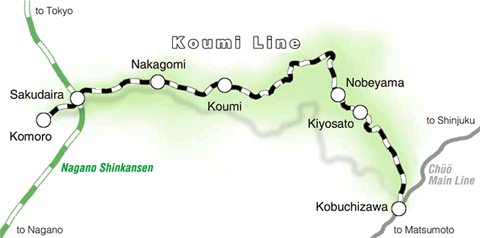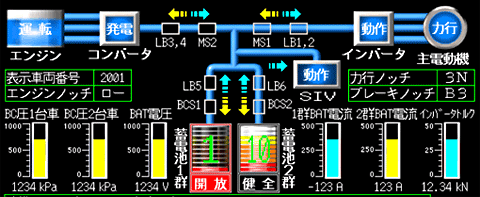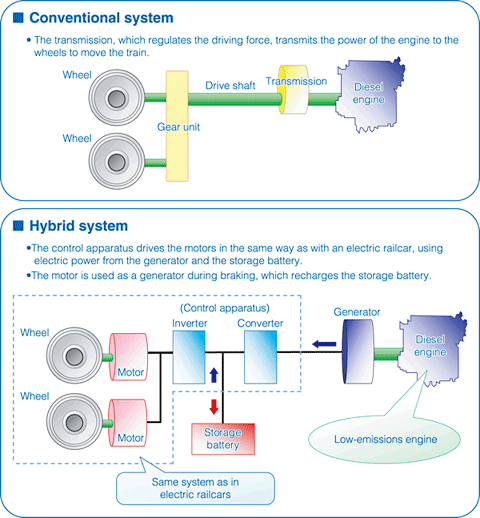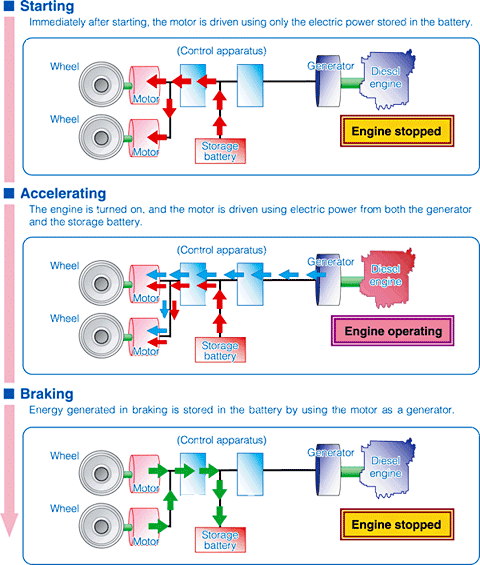Press Releases(Archive)
World's First Hybrid Railcar to Commence Operations!!
East Japan Railway Company
July 3, 2007
JR East has successfully developed and constructed three hybrid railcars (Series E200) complete with a new reduced environmental impact power system. The world's first hybrid railcars will commence commercial operations on the Koumi Line between Kobuchizawa and Komoro on July 31, 2007.
Operating schedule
- Tuesday, July 31 [First day of operations]
<Outbound trains>
Depart Nakagomi Station, 9:55 →Arrive Komoro Station, 10:23 Depart Kobuchizawa Station, 13:50 →Arrive Nakagomi Station, 15:34 <Inbound train>Depart Komoro Station, 10:36 →Arrive Kobuchizawa Station, 13:32 - Every day from Wednesday, August 1 to Sunday, September 2
<Outbound trains>
Depart Nakagomi Station, 6:55 →Arrive Komoro Station, 7:23 Depart Kobuchizawa Station, 10:07 →Arrive Nobeyama Station, 10:41 Depart Kobuchizawa Station, 12:39 →Arrive Nobeyama Station, 13:11 Depart Kobuchizawa Station, 14:02 →Arrive Nobeyama Station, 14:38 Depart Kobuchizawa Station, 15:33 →Arrive Nakagomi Station, 17:29 <Inbound trains>Depart Komoro Station, 7:49 →Arrive Kobuchizawa Station, 10:01 Depart Nobeyama Station, 10:50 →Arrive Kobuchizawa Station, 11:21 Depart Nobeyama Station, 13:20 →Arrive Kobuchizawa Station, 13:49 Depart Nobeyama Station, 14:48 →Arrive Kobuchizawa Station, 15:22
The Koumi Line has steep grades as it goes north from the Chuo Line connection at Kobuchizawa, and Nobeyama is the highest-altitude railway station in Japan.
From September 3 the new hybrid railcars are scheduled to be operated on extra trains on Saturdays, Sundays and holidays as well as on regular weekday trains. The schedule plan will be announced in our website and timetables as soon as it is decided.
Departure ceremonies
On Tuesday, July 31, a departure ceremony for the first hybrid train was held at Nakagomi Station at 9:00. Ceremonies for the start of operations were also held at Kobuchizawa, Kiyosato, Nobeyama, Koumi and Komoro stations.
 |
 |
Kiha 200 diesel railcar debut

JR East has successfully developed a hybrid motive-power system, based on reduced environmental impact and other concepts. The company has recently constructed three hybrid railcars that are the world's first in regular service, and is using these new hybrid railcars for commercial operations on the Koumi Line.
| Capacity (passengers) | 117 (Seating capacity: 46) | |
| Maximum operating speed (km/h) | 100 | |
| Principal dimensions | Car body length (mm) | 19500 |
| Car body width (mm) | 2920 | |
| Roof height (mm) | 3620 | |
| Floor height (mm) | 1130 | |
| Engine | System | Direct injection inline 6-cylinder horizontal diesel engine |
| Output | 331kW (450PS) | |
| Main circuit | Storage battery for main circuit | Lithium-ion storage battery 15.2kWh |
| Motor | MT78 Rating: 95 kW | |


| • | Saves energy | Fuel consumption reduced | |
| • | Harmful exhaust gases reduced | Nitrous oxides (NOx) and particulate matter (PM) reduced by approximately 60% | |
| • | Lower noise level | Engine noise reduced by approximately 30dB. (The engine is turned off during stops at stations) |

| • | Parts from electric railcars are used, and they require less maintenance | |
| • | There are fewer parts that require maintenance (such as transmission components) | |
| • | Hot water and refrigerant piping are eliminated through use of electric heating and air conditioning | |
| • | Components requiring less maintenance are used (e.g. auxiliary power unit, inverter, converter, motor) |


